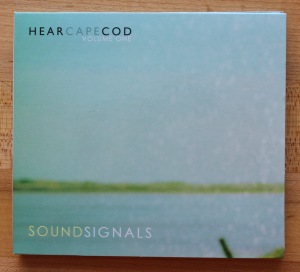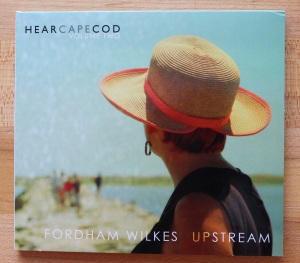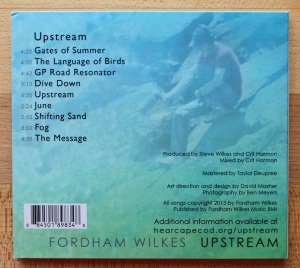Review: Benoît Pioulard – Hymnal Remixes
450 CD copies, first 15 copies signed by BP, also digital (to be released January 21, 2014)
Remix label: http://losttribesound.com
Available at: http://losttribesound.bandcamp.com/album/hymnal-remixes
Artist website: http://pioulard.com Original recording label: http://kranky.net
CD 1 Remixes – 44:51: 1. Mercy (Fieldhead), 2. Margin (William Ryan Fritch), 3. Excave (Squanto), 4. Litiya (The Green Kingdom), 5. Homily (Cock and Swan), 6. Florid (Brambles), 7. Censer (Field Rotation), 8. Reliquary (Part Timer), 9. Margin (Zachary Gray), 10. Foxtail (Graveyard Tapes)
CD 2 Remixes – 53:29: 1. Hawkeye (The Remote Viewer), 2. Censer (Segue), 3. Knell (Widesky), 4. Florid (Loscil), 5. Foxtail (Radere), 6. Gospel (James Murray), 7. Reliquary (Benoît Honoré Pioulard), 8. Margin (Ruhe), 9. Gospel (Window Magic)
****
I want to note that sound quality and production are very important to me, almost as important as the music itself. So, given that statement, please read this review carefully. Comments seen as criticisms are not of the music or the writing, but largely on the choice of production methods and sound quality. I think very highly of the music penned and played by Tom Meluch (in his guise as Benoît Pioulard). With that in mind, please read on.
****
Hymnal – The Original
I’ve enjoyed Benoît Pioulard’s previous kranky releases as well as the more experimental vinyl EP Plays Thelma on Desire Path Recordings, so coupled with the early press accounts of Hymnal I was hopeful that it would be a great album…
I feel that there are many exceptional songs on Hymnal (Hawkeye, Reliquary, Excave, and especially Margin, and Litiya) along with some comforting drones (like Censer), but in general I feel there is a lack of presence in the recordings—they sound flat, out-of-phase and firmly entrenched in a claustrophobic mid-range (nothing at all like the sumptuous reverb of the intended muse “religious architecture”). Pioulard’s songs on this particular album are lost in a limiting boxy haze.
I’m a big fan of lo and mid-fi recordings and some musicians do it so well; East River Pipe (FM Cornog), more recently Will Samson and especially (one of my favorite albums of 2013) Bryan Ferry’s The Jazz Age (recorded in monaural with Jazz-era microphones). Granted, some artists and writers create works within strict limits and can be quite successful (shades of a single color, certain textures or excluding a specific vowel in a written work), but with all the praise I take a contrarian view on the technical execution of Hymnal. The quality and depth of recordings matter to me, unless there is a stated goal for why sound must be altered so dramatically.
I learned recently of Benoît Pioulard’s other off-label work, such as his 2011 digital EP Lyon (and in support of how I think Meluch writes some great songs). Have a listen to the gorgeous and unadorned song Tie:
It has some of the qualities of recordings by Nick Drake and Bert Jansch (think The Black Swan). I’m certainly not advocating that Pioulard chooses between one recording approach or another, I’m suggesting perhaps a sound somewhere in the middle, with the vocals higher in the mix and a fuller sound.
Hymnal – The Remixes
Original songs can find new life in covers or remixes. So, when Lost Tribe Sound announced this collection of Hymnal reinterpretations (by artists such as Loscil, Cock & Swan, Brambles, The Green Kingdom and William Ryan Fritch) I thought that some of the depth that I felt was missing in the original might be introduced or restored.
This is a really interesting collection, and the recordings in most cases have the clarity and sonic diversity that I had hoped for in the original album.
The two CDs are split loosely into two categories: 1) rhythmic with vocals and 2) more on the ambient side, largely instrumental. After a couple of listens I was quite surprised that I found myself leaning more towards the feel and sound of the more actively engaging CD 1.
As with the original album Mercy (I’ll call it track 1.1) opens the collection and it’s a bit of an assault on the ears (the original being a full-on harmonium before the vocals enter), but in the remix version the harmonium is tamed and a slow march beat is overlaid. The sound is far more spacious, as if entering a cathedral. William Ryan Fritch’s remix of Margin (1.2) is an almost frenetic orchestration compared to the original and Zachary Gray’s version (1.9), which starts off quite stark with lone guitar and vocal and gradually the instrumentation and soundstage expands—I think both are quite successful, and in Gray’s version the vocals are clear as the song develops (makes me wonder all the more why Meluch chose to shroud such a great song). Squanto’s remix of Excave (1.3) is a series of repeated fragments made into a rhythm and sounding very much like some of Peter Gabriel’s mid-career work.
The Green Kingdom’s and Cock & Swan’s remixes of Litiya (1.4) and Homily (1.5) are quite enchanting. The sound of Litya softer, fuller and more comforting than the original—the soft electric guitar and cello overlays give the track such an easy feel, and Pioulard’s largely untreated vocals weave right in, so well. I have to admit that Homily is one of my least favorite tracks on the original album and Cock & Swan have woven their unusual magic, making it an ethereal journey (supplemented with Ola Hungerford’s vocals) while maintaining some of the original grit, and I assume that the crisp nylon guitar overlay is Johnny Goss’s. Brambles transformed Florid (1.6) into a (quite unexpected) “chill dance” piece—it has a languid vibe. Field Rotation put Censer (1.7) into a time machine and it emerged from an old modular Moog during Tangerine Dream’s Stratosphere era. The original version of Reliquary is furtive and mysterious, and Part Timer (1.8) stretched this concept further with his stark (and at time minimally orchestrated) interpretation.
The Remote Viewer’s version of Hawkeye opens CD2 (2.1) and its origins are deftly shrouded, and at first I didn’t care for it much, but it has grown on me—it’s delicately fragmented with some quirky treatments (very Boats-y!) and at times it sounds like Mark Isham’s early experiments from back in his Windham Hill label days (yes folks, I’m that old). My two favorite tracks on CD2 are Segue’s version of Censer (2.2) and Loscil’s (at times, visceral) remake of Florid (2.4). Curiously, Censer is given a gentle heartbeat, which despite the motion has a rather soothing effect to it. The remix of Florid somewhat belies its connotation, elaborate in its sonic depth, but not ornate.
Widesky’s Knell is an expansive fragmentation of the cathedral bells of the original and then all is absorbed into a rather compressed package of the experience (kind of like a snow-globe)—it’s a bit edgy for my ears. Sorry, but Radere’s version of Foxtail (2.5) just didn’t work for me—too strident. James Murray’s Gospel (2.6) meanders and bends with a broad color palette and is a contrast to Window Magic’s version (2.9) that is narrower, more primary shaded.
Pioulard’s remix of his own track Reliquary (2.7) shrouds the original even further; the furtive character is diminished—a curious approach. Ruhe’s version of Margin (2.8) is an almost unrecognizable adaptation of the original with only the slightest of rhythmic and vocal fragments remaining—in kind of a trance beat.
Sometimes sequels or remakes are better than the original, and that’s how I feel in this case on the production side of things. Despite my comments on the source material, I urge listeners to purchase a copy of Hymnal and judge for yourselves—some might disagree completely with my assessment on the sound quality. I’ll continue to look forward to Benoît Pioulard’s future recordings.
This is a solicited review.
Review: HearCapeCod – SoundSignals and Upstream
Volume One – SoundSignals – #HCC001
Notes and Detailed Credits: http://hearcapecod.org/soundsignals/
CD 1 (Time: 39:08): Sound Signals: Act 1: On Land, Act II: On Water, Act III: A Year, Coda: Route Six
CD 2 (Time: 46:24): Signals Remixed: 1: Goldmund, 2: Marcus Fischer, 3: Loscil, 4: Taylor Deupree, 5: Neara Russell, 6: FourColor, 7: Steve Wilkes, 8: Simon Scott, 9: FourColor & SoundSignal
Volume Two – Upstream by Fordham Wilkes – #HCC002
Notes and Detailed Credits: http://hearcapecod.org/upstream/
CD (Time: 37:08): 1) Gates of Summer, 2: The Language of Birds, 3: GP Road Resonator, 4: Dive Down, 5: Upstream, 6: June, 7: Shifting Sand, 8: Fog, 9: The Message
Websites: http://hearcapecod.org/ & http://www.fordhamwilkes.com/
Sound Archive: http://www.hearcapecod.org/ListView.php
Recordings mastered by Taylor Deupree at 12k Mastering
Since the middle of 2011, Berklee College of Music professor, percussionist and Blue Man Group alum, Steve Wilkes has been working on a project to capture the sounds of Cape Cod over a year and to map those sounds as an aural history of the region (the far eastern end of Massachusetts in the northeastern United States). The project was funded in part by the Newbury Comics Faculty Fellowship. The region has undergone many environmental and man-made changes, from rising sea levels and coastal erosion to residential development. It was Wilkes’ feeling that the region is measured and analyzed in many ways (like bird population counts, temperature and sea levels), but there was yet to be a base-line environmental sound analysis examining animal, environmental and cultural activity in the region.
At this point, the project consists of 3 CDs: 1, a collection of regional sounds; 2, the sounds remixed by a number of musicians who will be familiar to many, and 3, a song-cycle inspired by the region at various times throughout the year (which also incorporates many of the environmental sound recordings and the detailed credit links give an excellent overview of the variety on-location recordings). The album artwork evokes pleasant memories of worn edged blue-green beach-glass.
CD 1 is a sonic time capsule, and at first it reminded me of a number of sound effects and spoken word recordings of the 1940s and 50s, and for a brief moment, I thought I was hearing a snippet of the old records by Bert and I. It also had the immediate effect of taking me back in time to the days when I summered on “The Cape” as a child with my parents in the early 1960s. The documentation of the region also harkens back to some of the expansive sound archive work by Alan Lomax. This CD chronicles the sounds of land, water and activities that mark the course of a year from a First Night Noise Parade to the calming summertime beach surf. It closes with the reading of the poem Route Six by Stanley Kunitz (being the road that travels down the center of the “flexed arm” of Cape Cod, reaching out into the Atlantic Ocean).
Having lived in a beach-town region in nearby southern Connecticut, I am also reminded that a resort region like The Cape has two lives—the times when the summer-folk occupy and the off-season when only the locals remain. The off-season is the time when locals can take long walks on the shore beaches and see very few people. Life goes on in a different way after the tourists have left in the autumn.
Taylor Deupree’s Remix
Wind Chimes Field Recording That Inspired TD’s Remix
CD 2 is a sensitively created set of interpretive remixes by many well known artists in the current electro-acoustic, ambient and electronic music communities (see list above). The field recordings from CD 1 are delightfully co-mingled with the offerings from each of the artists (well documented at the web link also noted above). I was immediately struck by the opening notes of the first track by Goldmund (Keith Kenniff), the piano melody being very reminiscent of Anthony Phillips’ Death of a Knight from Henry: Portrait from Tudor Times (from the album The Geese and The Ghost), before drifting into a dream-state with seaside, night-time crickets and Morse Code pulses.
FourColor Remix
Field Recording for FourColor Remix
Most of the remixes are by artists who have done work strongly connected with outdoor environs and water (as in the Flaming Pines label Rivers Home series), like Marcus Fischer, Taylor Deupree and Simon Scott (to name a few). The character of this disc ranges from contemplative to glitchy (FourColor) to playfully rhythmic (as in Loscil’s remix). The remix by Steve Wilkes includes the first HearCapeCod recording made in Truro at Corn Hill Beach in the summer of 2002. The CD closes with a collaboration of FourColor and SoundSignal (Wilkes) and is the most melodic and rhythmic of the tracks of the album. This CD forms a strong connection to the foundation provided by Wilkes’ research and recordings. As much as I’m tempted to suggest that this CD be made available separately, after spending time with the entire set, it is actually a quite inseparable part of the whole.
CD 3 Upstream, is a song cycle by the duo Fordham Wilkes (Ginny Fordham: vocals, Steve Wilkes: drums with Crit Harmon: guitars and Keiichi Sugimoto: guitars) and is inspired by years of memories of time on Cape Cod and it is the most personal of the three discs. Fond recollections of places run deep for many and they have different effects on people. This is where the project transforms from being objective (CD 1) to the most reflective and personal (while avoiding sentimentality).
The album has a sense of welcoming and ease, enjoying summer breezes, wading in tidal pools, walking in sanctuaries or along beaches. There is no heavy foreboding or hand-wringing of what was or could be; the feeling is that of the now and hopefulness, and Ginny Fordham’s voice brings a relaxing calm to the album. Gates of Summer opens CD3 and is forms an instrumental and melodic transition from the last track of CD2. The Language of Birds plays rhythmically with a juxtaposition and syncopation of the instrumentation and avian field recordings.
GP Road Resonator
The Field Recording Forming Basis for GP Road Resonator
The ever-present drone of automobile traffic is also a reality of summers on The Cape (whether passing over the Sagamore or Bourne bridges before necking down to Route 6 or at the half-way point to Provincetown, in Eastham) and these sounds are merged with fleeting views to salt marshes in the pensive GP Road Resonator. As in CD 1, there are songs of Land as well as Water, as in Dive Down and Upstream (as much a metaphor for returning to and rebirth of the area as it is the traffic on Route 6 that one is “swimming” against!).
CD 3 is also a reflection of CD 1’s A Year, The Cape in song over the course of a single circumnavigation of our Earth around the Sun. As the album progresses through the summer and into the end of a year (June, Shifting Sand and Fog) it grows more contemplative with the advancing of the calendar, melding dreams with reality. Each Spring many look forward the approaching time outside and then seemingly in the blink of an eye, Summer is over. The album closes with The Message, an inspiration left in a voicemail, which ultimately is the beacon announcing the sense of place of The Cape that inspired the HearCapeCod project.
****
The release date (May 28, 2013) for this set is at the unofficial “gate of summer” season, just after Memorial Day weekend. These albums will be available at: Booksmith Musicsmith, Orleans, MA: https://www.facebook.com/BooksmithMusicsmith , Muir Music, Provincetown, MA: https://www.facebook.com/muirmusic5 , The Cape Cod Museum of Natural History: http://ccmnh.org/, CD Baby: SoundSignals On CD Baby, iTunes: http://www.apple.com/itunes/ and Amazon.com: http://www.amazon.com/








